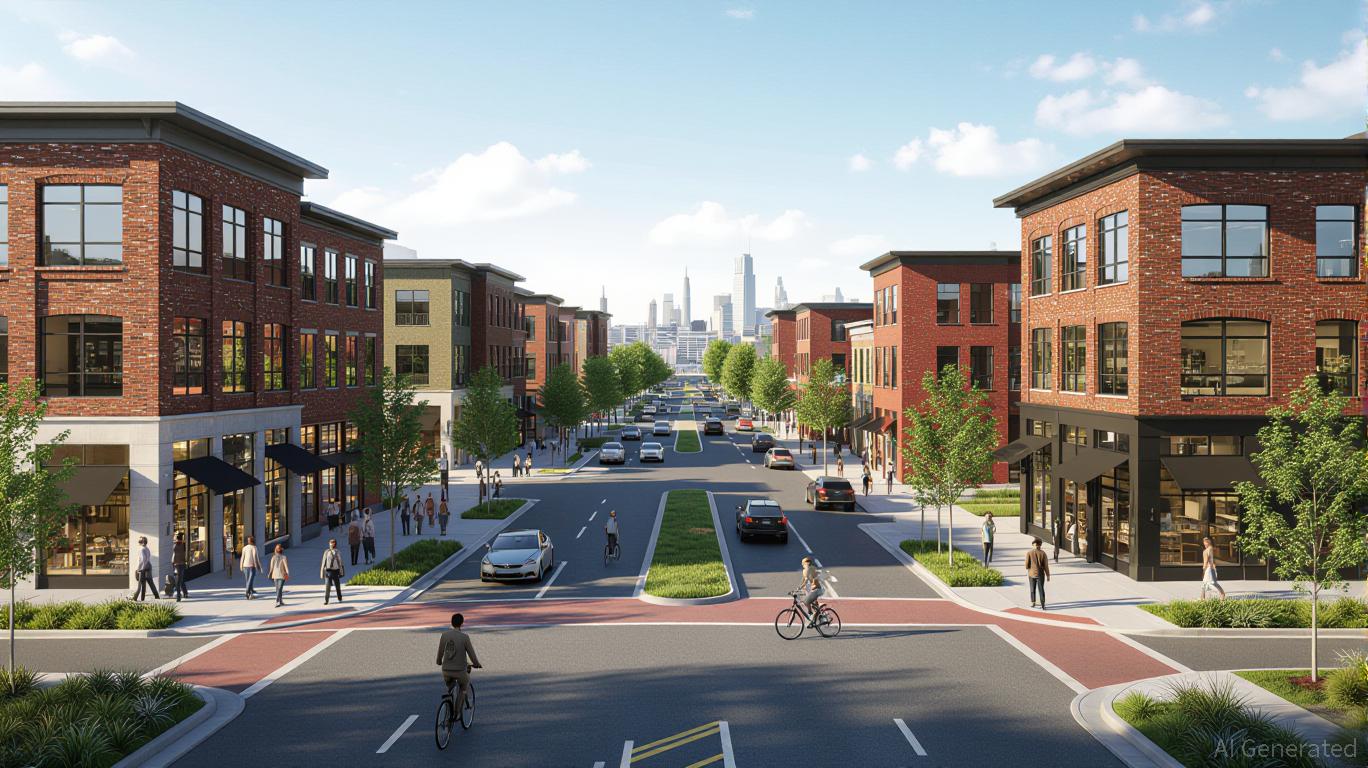Infrastructure-Connected Real Estate: Emerging Opportunities in Post-Industrial Zones
- Post-industrial corridors are becoming strategic real estate hubs through infrastructure upgrades and PPPs, driven by state funding and governance innovation. - Webster , NY secured $38M in grants (2023-2025) for transportation , wastewater, and downtown revitalization, repositioning industrial sites for mixed-use development. - Ohio's $100M Residential Development Revolving Loan Program and $121.5M Brownfield initiatives demonstrate state-level policy alignment with infrastructure-linked value creation.
The redevelopment of former industrial corridors into thriving centers for business and housing has shifted from a speculative idea to a necessary strategy. As cities throughout the United States transition from traditional manufacturing bases to more diverse, service-driven economies, real estate tied to infrastructure is becoming a prominent investment focus. This evolution is fueled by a combination of state funding initiatives, collaborations between the public and private sectors (PPPs), and progressive policy approaches. The example of

Webster, NY: A Model for Infrastructure-Driven Renewal
The Village of Webster stands out for its effective use of infrastructure grants to enhance real estate prospects. From 2023 to 2025, the village secured more than $38 million in combined state and federal support, aimed at both essential upgrades and economic growth. A $9.8 million FAST NY Grant is dedicated to improving transportation infrastructure at the Xerox campus and the NEAT and fairlife manufacturing locations,
In addition, the Webster Forward project was awarded $4.5 million through the NY Forward program to upgrade downtown features, such as Veterans Memorial Park and Harmony House
Such initiatives reflect a wider movement: post-industrial towns are no longer waiting for decline but are proactively shaping their futures. This approach creates a real estate environment where infrastructure investments are directly linked to rising property values, especially in areas shifting from single-purpose industrial use to vibrant, mixed-use communities.
State Funding Initiatives and the Expansion of PPPs
Webster’s achievements are part of a broader trend of state-driven efforts to speed up post-industrial renewal. For example, Ohio’s 2025 biennial budget
Public-private partnerships (PPPs) are playing an increasingly vital role in these transformations. According to a JLL analysis,
Nevertheless, these partnerships can be complex.
Investment Perspective: Aligning with Policy and Infrastructure
For those looking to invest, the message is straightforward: real estate tied to infrastructure in former industrial areas offers strong potential when supported by state funding and PPP structures. Insights from Webster and Ohio point to three main drivers:
1. Infrastructure as a Driver: Funding for transportation, utilities, and environmental improvements directly increases land value and development prospects.
2. Policy Support: State initiatives like NY Forward and Ohio’s Residential Development Revolving Loan Program offer reliable funding, lowering investment risk.
3. Innovative Governance: Progressive municipalities are adopting hybrid models that combine public oversight with market-driven efficiency, as demonstrated by the TIRGI approach
Investors should focus on properties in areas with active PPP projects and clear infrastructure plans. Webster’s NEAT and fairlife locations, for example, are set to gain from both immediate infrastructure improvements and the long-term benefits of economic clustering. Similarly, Ohio’s All Ohio Future Fund—which allocates $92 million for site development—provides a repeatable framework for identifying promising corridors
Conclusion: Forging New Connections Between Industry and Commerce
The intersection of infrastructure investment, state policy, and PPP innovation is transforming the landscape of post-industrial real estate. Towns like Webster, NY, are proving that thoughtful redevelopment can be both practical and profitable. For investors, the key is to identify early opportunities in communities where governance and funding are aligned. As frameworks like TIRGI and similar models evolve, barriers to entry for infrastructure-focused real estate are expected to diminish, positioning this sector as a major driver of growth in the coming decade.
Disclaimer: The content of this article solely reflects the author's opinion and does not represent the platform in any capacity. This article is not intended to serve as a reference for making investment decisions.
You may also like
Shiba Inu's Transition From Fear to Gathering Depends on Surpassing $0.00000944
- Shiba Inu (SHIB) shows early recovery signs as buyers support key levels, contrasting November's sell-off. - Token burns and 15% derivatives growth boost optimism , with analysts projecting potential 3,000% gains if $0.00000944 breaks. - Strategic partnerships with Unity Nodes expand SHIB's utility beyond speculation, aligning with meme token trends. - Risks persist: major moving averages and outflows remain bearish, requiring sustained inflows to confirm turnaround.
Uber Launches Robotaxi Service in Abu Dhabi, Signaling Major Progress in Worldwide Autonomous Vehicle Growth
- Uber launches first overseas autonomous robotaxi service in Abu Dhabi via WeRide partnership, marking the Middle East's first driverless rideshare deployment. - The Yas Island service expands Uber's global autonomous strategy, with plans to enter 15 new cities in five years following U.S. Waymo collaborations. - Strong Q3 financials ($13.47B revenue, $6.63B profit) contrast with insider share sales and competitive pressures from Tesla's ride-hailing ambitions. - Strategic partnerships like Delta Air Line

Tether's Bold Move with Gold: The Emergence of a Digital Central Bank
The Comeback of Momentum ETFs: Exploring the Factors Behind the Recent Spike in Popularity
- Momentum ETFs surged in 2025, outperforming benchmarks with $377B institutional inflows driven by shifting market sentiment and active ETF growth. - Adaptability through dynamic risk management and factor tilts helped momentum strategies retain appeal despite tech sector corrections. - Regulatory innovations like SEC Rule 6c-11 and thematic investing in AI/energy fueled ETF expansion, with 396 new active ETFs launched in H1 2025. - Academic research confirms momentum's long-term robustness but warns of r
